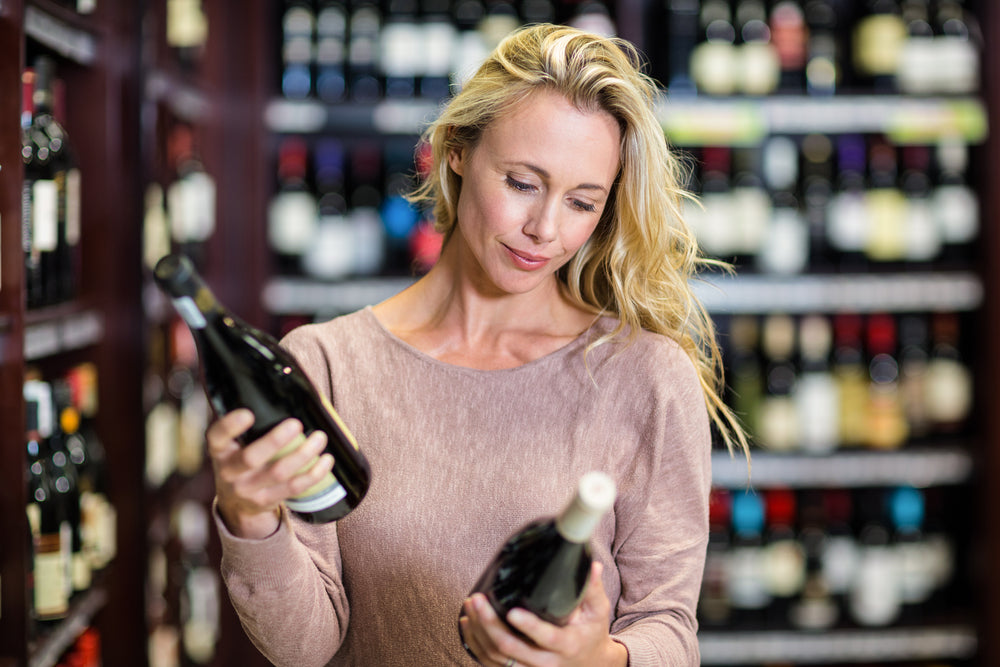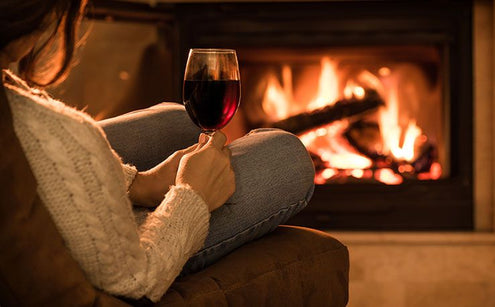You're a professional at checking labels at the grocery store, but when you hit the liquor store for a bottle of wine to find out the nutritional content it’s a different story.
There are strict government laws in Australia when it comes to nutritional and alcohol content information on food and beverage items; however in the wine industry this can be unclear as several terms are used.
The degree of alcohol is equivalent to its percentage by volume and is often referred to as ‘abv’ (alcohol by volume). Wine alcohol levels are related to the amount of sugar that has accumulated in the grapes at harvest time. The higher the sugar levels the higher the potential alcohol.
It was once considered that the most alcoholic wines were more powerful and better quality. Fast forward to 2016 and ‘low alcohol’ wines are the fastest growing category in Australia and across the globe. Consumers are more educated with the rise of technology and partly due largely to the western trend of health and wellness. As this trend is rising there is now a new wine category ‘low calorie and low alcohol wines’. Beverages include grape juice, apple juice, energy drinks, coconut water, mixers, ginger beer, alcohol removed and ‘low alcohol’ wines and can range anywhere between 0-12% percent ABV. In reality according to mandatory labelling requirements in Australia, an alcoholic beverage that contains more than 1.15% alcohol must not be represented as a low alcohol beverage.
It was once considered that the most alcoholic wines were more powerful and better quality. Fast forward to 2016 and ‘low alcohol’ wines are the fastest growing category in Australia and across the globe. Consumers are more educated with the rise of technology and partly due largely to the western trend of health and wellness. As this trend is rising there is now a new wine category ‘low calorie and low alcohol wines’. Beverages include grape juice, apple juice, energy drinks, coconut water, mixers, ginger beer, alcohol removed and ‘low alcohol’ wines and can range anywhere between 0-12% percent ABV. In reality according to mandatory labelling requirements in Australia, an alcoholic beverage that contains more than 1.15% alcohol must not be represented as a low alcohol beverage.

If a beverage is below 0.5% alc/vol the food standards of Australia and New Zealand do not require manufactures to include a statement of alcohol as it is non-intoxicating. To put this in perspective a normal glass of fresh orange juice can naturally contain up to 0.5% alcohol. Fruit juices contain traces of alcohol from the use of flavouring extracts or from natural fermentation but this is less than 0.5%.

Let’s have a closer look at the most commonly used terms when discussing alcohol content.

Alcohol removed/ De-alcoholised:
Containing only trace amounts of alcohol.
Drinks contain below 0.5% of alcohol by volume.
‘Alcohol free’ – a general term, normally used when discussing alcohol removed/dealcoholised wine, however there is no official definition for this in Australia.
Low alcohol
0.5-1.15% alcohol by volume (‘labelling of alcoholic beverages and food containing alcohol’ Food standards Australia, March 2016) must contain statement of ABV % and standard drinks
‘Low alcohol/low calorie’
Containing smaller amounts of alcohol, normally used as a general term and can range anywhere between 0-12% ABV. Must contain statement of ABV % and standard drinks
A standard drink
A standard drink is any drink containing 10 grams of alcohol. One standard drink always contains the same amount of alcohol regardless of container size or alcohol type that is beer, wine, or spirit. A standard drink is a unit of measurement. In the same way one metre measures a particular distance travelled, one standard drink measures a particular amount of alcohol consumed.
Number of standard drinks – wine
Red wine 13% alc. Vol
100 ml standard serve - 1 standard drink
150 ml average restaurant serving - 1.5 standard drinks
750 ml bottle - 7.7 standard drinks
2 litre cask - 21 standard drinks
4 litre cask - 41 standard drinks
White wine 11.5% alc. Vol
100 ml standard serve - 0.9 standard drink
150 ml average restaurant serving - 1.4 standard drinks
750 ml bottle - 6.8 standard drinks
2 litre cask - 18 standard drinks
4 litre cask - 36 standard drinks
Champagne 12% alc. vol
150 ml average restaurant serving - 1.4 standard drinks
750 ml bottle - 7.1 standard drinks
Port 17.5% alc. vol
60ml standard serve - 0.8 standard drinks
2 litre cask - 28 standard drinks When checking alcohol content for the beverages you are consuming it matters on the reasons for why you are cutting down, avoiding alcohol.
If you are pregnant/breast feeding:Anything 0.5% or less is the best option. Alcohol is harmful at every period of pregnancy, while a child’s organs are forming; a glass of wine consumed by a pregnant woman entails the same dose of alcohol for a foetus which gives a much greater impact considering its size and weight. Alcohol removed wine contains antioxidants and can be a better option then soft drink for social events during pregnancy.

Driving: Less than one standard drink per hour; however this can be affected depended on the size and weight of the individual. Anything 0.5% less is a good option. Alcohol removed wine contains antioxidants and can be a better option then soft drink for social events when you are the designated driver.

Religious reasons: Abstaining entirely from alcohol, anything 0.5% less is the best option. Keep in mind that anything with residual sugar contains trace amounts of alcohol.
Weight loss/Fitness: Alcohol is high in calories, so if you want to keep the calories down anything 0.5-7% is a good option. When considering the healthy ‘low alcohol’ option it’s important to consider the sugar content. Dessert wines are going to be extremely high in sugar, less dramatic would be a Sparkling Cuvee or Brut style wines. Dry white wine or red have a much lower sugar level.

Taking medication: Some medications are not as effective when combined with alcohol; it also puts extra strain on the liver. Anything 0.5% or less is the best option.
Health conscious age 18-50s: A healthy lifestyle diet includes fruit, vegetables, and essential fatty acids and of course lots of exercise. Additionally during this time, there is often no shortage of occasions to share a glass. The best option would be a gin and tonic, vodka lime soda (drinks including water) or wine between 0.5-7% is a good option with included antioxidants and is low calorie.

Health conscious age 60s+: Wine contains antioxidants which can help with reducing blood pressure and lower the risk of heart attacks (see article – Is red wine good for you?’) Anything between 0.5-7% is a good option.
Or if you like to drink wines that are more full-bodied up to 13.5% in moderation is a good option.
Now you are all set and prepared for your next meal time or social event!
Cheers,
Sources
‘Labelling of alcoholic beverages and food containing alcohol’ Food standards Australia, March 2016
‘The highs of low calorie and low alcohol wines’ Wild about wine, March 2013
‘The Australian standard drink’ Australian government, department of health May 2012
‘An Easy Guide to Choosing Lower Alcohol Wines’ The kitchn
‘The best wines for your waistline’ Shape Magazine
‘Dealcoholized wine and malt beverages – labelling’ Compliance policy guides, food & drug administration.




